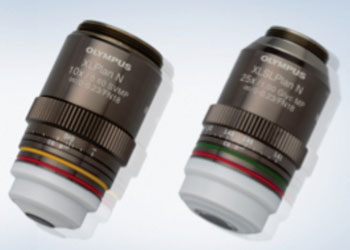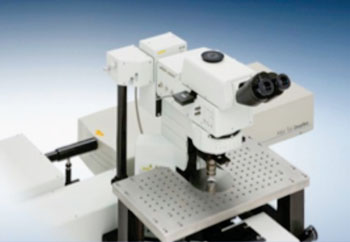New Objectives Enhance Multiphoton Laser Microscopy
By LabMedica International staff writers
Posted on 25 Sep 2014
Two new objectives specifically designed for use with advanced multiphoton laser microscopes are now available for use in biotech and other life science laboratories.Posted on 25 Sep 2014
Olympus (Hamburg, Germany) has launched the dedicated XLPLN10XSVMP and XLSLPLN25XGMP multiphoton excitation (MPE) objectives for deep imaging.
In multiphoton microscopy, fluorescence excitation efficiency is maximized by using a short pulse width in the focal plane. However, the pulse width of a femtosecond laser disperses as it passes through optics, broadening the pulse width when the beam exits from an objective. The laser beam-shaping optics establish a compensatory dispersion, the exact inverse of that produced by the microscope’s optics, thus restoring the ideal pulse width for the specimen.
The new objectives were designed for use with the Olympus FVMPE-RS and FV1200MPE multiphoton microscopy systems. Both objectives offer super-long working distances of eight millimeters, providing the capability and space for structural and live-cell imaging deep within large intact samples (such as whole mouse brain), especially useful in neuroscience applications.
A high transmittance range of 400–1,600 nanometers extending into the infra-red spectrum allows deeper imaging with minimal damage to tissue, and is well-suited to combine conventional multicolor MPE imaging with label-free methods like third- and second-harmonic generation.
The large field of view provided by these objectives enhances data collection from samples treated with the latest clearing agents by several orders of magnitude and this combined with high flexibility and correctional capabilities makes them the objectives of choice for researchers using MPE or light sheet microscopy techniques.
Related Links:
Olympus















